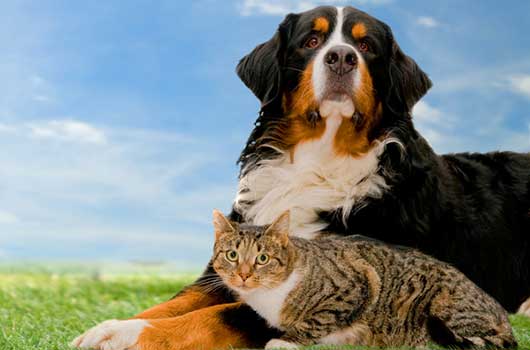
Whether you’re a current pet owner or looking to add a new member to your family, protecting your pets is a major responsibility. After all, your pet is an important member of your household. Unfortunately, some dangers are unavoidable, but others can be greatly reduced with a bit of research and planning.
Let’s look at 5 proactive solutions to help ensure pet health and safety for years to come.
PET INSURANCE
Though it may seem like a relatively new concept, pet insurance has a rich history. In fact, the first pet insurance policy ever written was for a dog in Sweden in 1924. To date, over one million pets are insured with some type of pet insurance plan across North America.
Do your research before purchasing pet health insurance. Most companies sell tiered plans, fitting a variety of budgets. It’s always better to be prepared than to worry about the bills when a pet is hurt or sick.
Read Related: Losing Our Beloved Lucky Dog
AVOID TOXINS
Pets, in many ways, are like small children. They’re curious, low to the ground and always getting into things. It can be hard to put yourself in their shoes—or paws—but you need to be on the lookout for potential hazards.
For instance, many people store cleaning supplies in low cabinets and under kitchen sinks. Pets tend to associate the kitchen with food and, if they accidentally consume cleaning supplies or poisonous human food, they and you are in for a very bad day.
Aside from the obvious toxic chemicals, keep these common foods out of reach:
- Chocolate & coffee
- Alcohol
- Avocado
- Macadamia nuts
- Grapes & raisins
- Onions, garlic & chives
- Milk
- Chicken bones
To prevent the ingestion of toxic substances, keep your cleaning supplies in a designated closet or utility room that remains closed at all times. Remove your pet from chemically cleaned rooms or spaces. When cooking and eating foods toxic to pets, remove your furry friends from the area.
KEEP SHOTS CURRENT
Vaccinations are a critical part of your pet’s health care. Vaccinations protect your animals from a host of diseases: rabies, distemper, hepatitis, parvovirus and many other conditions.
For both kittens and puppies, vaccination protocols recommend a series of vaccines, with vaccine boosters given at one year of age. Frequency thereafter varies depending on the animal’s lifestyle. Be sure to ask your veterinarian about your pet’s specific needs.
VISIT THE VET
Make sure you bring your pet to see a licensed veterinarian at least once a year. Senior animals or those experiencing health-related issues may require more frequent visits. Again, ask your veterinarian for advice.
Also, regular wellness examinations or ‘check-ups’ will allow the veterinarian to ask questions about your pet’s diet, exercise, thirst, breathing, behavior, elimination patterns and general health. Plus, a hands-on examination will allow the vet to recommend preventative treatments or send your pet home with a clean bill of health.
BEWARE OF OUTSIDE THREATS
Sometimes we forget our backyards are exposed to the elements, and Mother Nature can be cruel. If you reside in the north, your pet will be exposed to harsh winters and, like all warm-blooded animals, pets who are exposed to cold temperatures for extended periods of time can suffer severe frostbite.
Bodies of water pose a serious drowning risk to animals. Venturing too close to moving water or walking on thin ice can result in disaster for pets. Make sure you know where neighboring bodies of water are located, and monitor your pet if they go near.
You might not realize it, but dangerous animals live in virtually every state across the US. Research your neighborhood’s ecology, and don’t let small dogs or cats participate in outdoor activities without supervision.
Taking good care of your pets will give you many years of joy and companionship!












